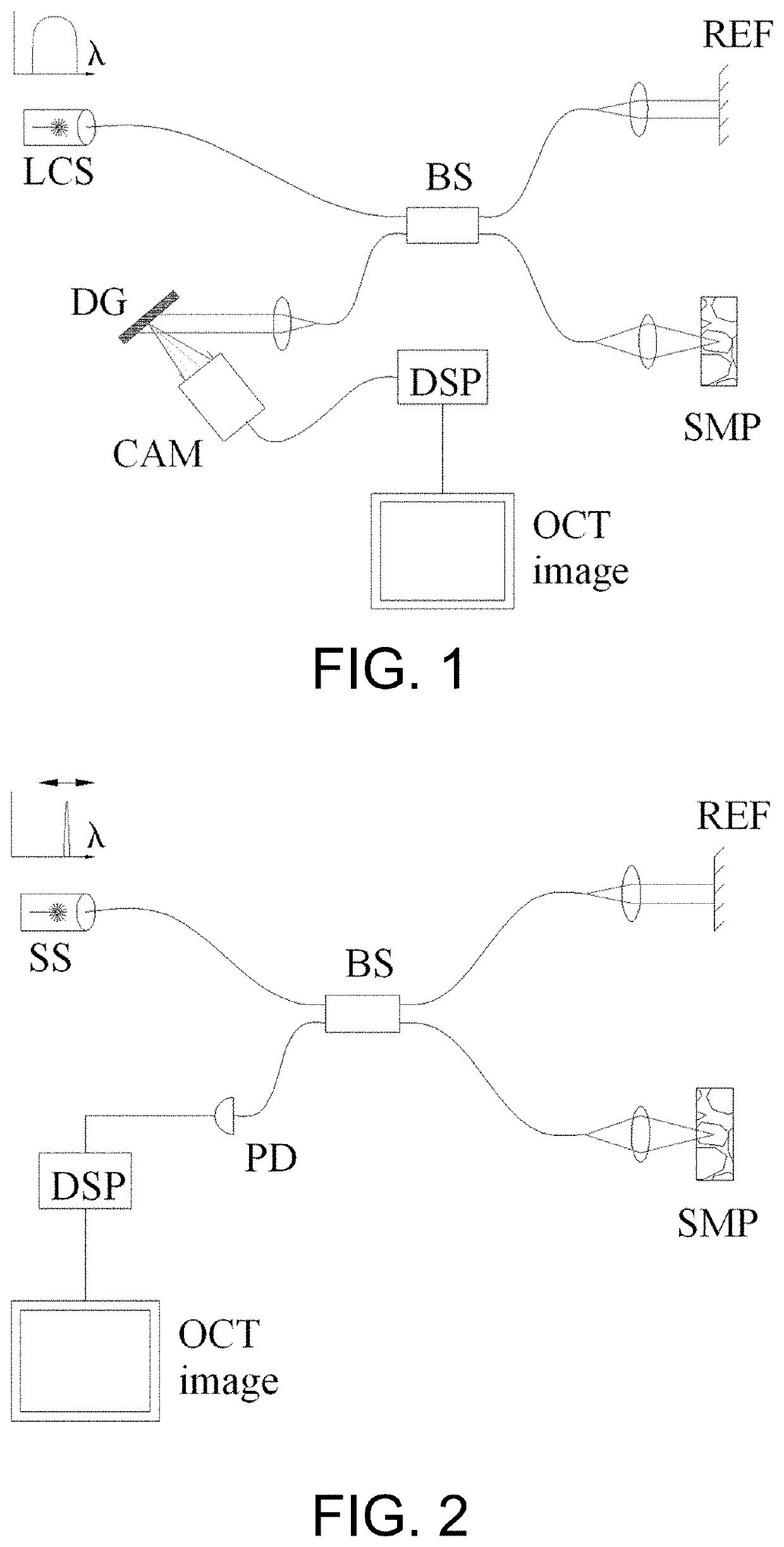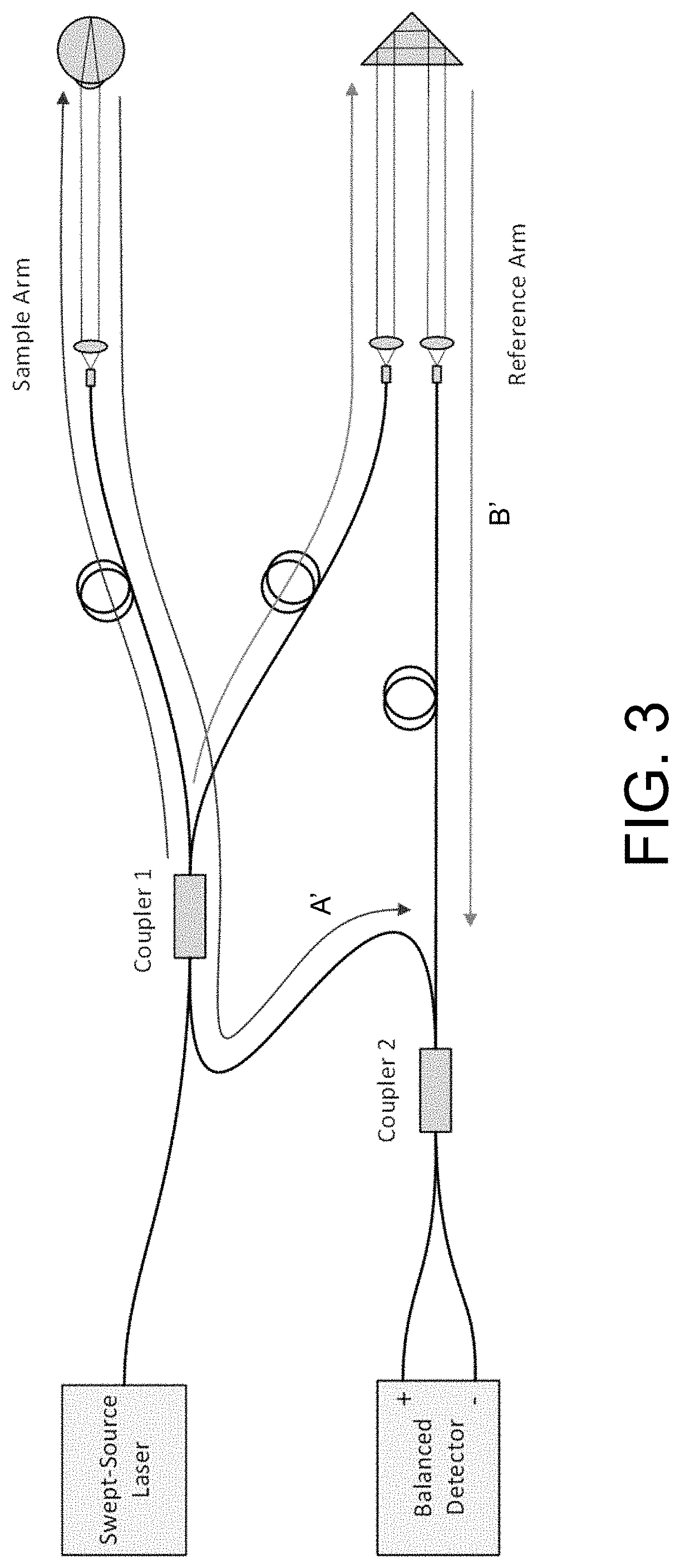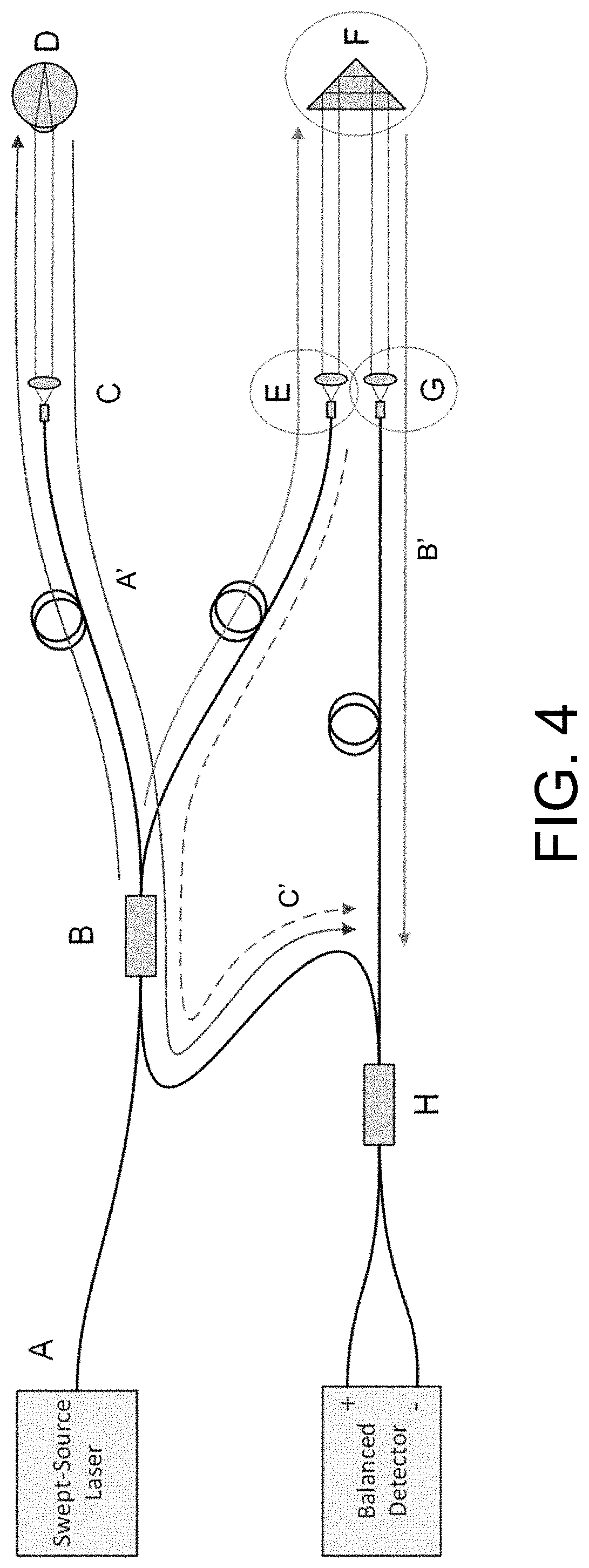Optical coherence tomography system
a coherence tomography and optical coherence technology, applied in the field of 3dimensional imaging technologies, can solve the problems of inability to widely adopt ss-oct by ophthalmologists, limited ss-oct and ss-oct imaging depths, and adverse side effects of coherence revival, so as to suppress coherence revival artifacts, increase the order of coherence revival, and sufficient spectral width
- Summary
- Abstract
- Description
- Claims
- Application Information
AI Technical Summary
Benefits of technology
Problems solved by technology
Method used
Image
Examples
embodiment i
[0045]An optical coherence tomography (OCT) system includes a swept-source laser 1, a Mach-Zehnder interferometer, and a balanced detector 2. The interferometer includes a first fiber coupler 3, a second fiber coupler 4, a sample arm 5 and a reference arm. The reference arm includes a reference arm front section 61, a reference arm rear section 62 and a delay line 63. Each of the first fiber coupler 3 and the second fiber coupler 4 includes a first port, a second port, a third port and a fourth port; the output of the swept-source laser 1 is connected to the first port of the first fiber coupler 3. The second port of the first fiber coupler 3 is connected to the sample arm 5. The third port of the first fiber coupler 3 is connected to the reference arm front section 61. The fourth port of the first fiber coupler 3 is connected to the first port of the second fiber coupler 4. The tail end of the reference arm front section 61 is connected to the reference arm rear section 62 through ...
embodiment ii
[0049]Embodiment II is different from Embodiment I in that Embodiment II achieves the same effect of suppressing the coherence revival artifacts by increasing the fiber length of the reference arm rear section 62 and decreasing the fiber length of the reference arm front section 61. Other parts of the system are the same as those in Embodiment I.
[0050]Let us assume that the sum of the optical path length of the reference arm front section 61 and the round-trip optical path length of the delay line 63 be L, then L should be less than the optical path length of the sample arm, with a difference greater than 8 times the cavity length of the swept-source laser. That is, the following condition needs to be met:[0051]OPL(B→E→F→G)
embodiment iii
[0052]The delay line 63 in Embodiment III is different from that in Embodiment I and Embodiment II. In the delay line 63, a single-collimator 631 (which serves as both the transmitting collimator and the receiving collimator) and a third fiber coupler 7 are shared by the reference arm front section and the reference arm rear section. The third fiber coupler 7 includes a first port, a second port and a third port. The reference arm front section 61 is connected to the first port of the third fiber coupler 7. The second port of the third fiber coupler 7 is connected to the single-collimator. The reference light enters the single-collimator, reaches the reflective optical component 632 (a corner reflector in the present embodiment), is reflected back along the same path, and passes to the third port of the third fiber coupler 7. The third port of the third fiber coupler 7 is connected to the second port of the second fiber coupler 4. Other parts are the same as those in Embodiment I an...
PUM
 Login to View More
Login to View More Abstract
Description
Claims
Application Information
 Login to View More
Login to View More - R&D
- Intellectual Property
- Life Sciences
- Materials
- Tech Scout
- Unparalleled Data Quality
- Higher Quality Content
- 60% Fewer Hallucinations
Browse by: Latest US Patents, China's latest patents, Technical Efficacy Thesaurus, Application Domain, Technology Topic, Popular Technical Reports.
© 2025 PatSnap. All rights reserved.Legal|Privacy policy|Modern Slavery Act Transparency Statement|Sitemap|About US| Contact US: help@patsnap.com



